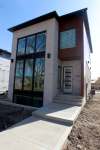City committee votes to support infill plan; wants tweaks
Advertisement
Read this article for free:
or
Already have an account? Log in here »
To continue reading, please subscribe:
Monthly Digital Subscription
$0 for the first 4 weeks*
- Enjoy unlimited reading on winnipegfreepress.com
- Read the E-Edition, our digital replica newspaper
- Access News Break, our award-winning app
- Play interactive puzzles
*No charge for 4 weeks then price increases to the regular rate of $19.00 plus GST every four weeks. Offer available to new and qualified returning subscribers only. Cancel any time.
Monthly Digital Subscription
$4.75/week*
- Enjoy unlimited reading on winnipegfreepress.com
- Read the E-Edition, our digital replica newspaper
- Access News Break, our award-winning app
- Play interactive puzzles
*Billed as $19 plus GST every four weeks. Cancel any time.
To continue reading, please subscribe:
Add Free Press access to your Brandon Sun subscription for only an additional
$1 for the first 4 weeks*
*Your next subscription payment will increase by $1.00 and you will be charged $16.99 plus GST for four weeks. After four weeks, your payment will increase to $23.99 plus GST every four weeks.
Read unlimited articles for free today:
or
Already have an account? Log in here »
Hey there, time traveller!
This article was published 10/06/2021 (1649 days ago), so information in it may no longer be current.
Winnipeg’s infill construction strategy will move forward, with a committee seeking to delete some of its most hotly debated items.
On Tuesday night, council’s property and development committee voted 3-1 to support the strategy. Coun. Kevin Klein cast the sole vote against, arguing the city failed to invest sufficient resources to prepare the plan.
The decision included a few key changes the committee’s chairwoman said are meant to “strike a balance” on what’s become a contentious topic.
“I think infill is really important as we grow our city and try to meet our climate change targets… We’re trying to look at ways on how we (can avoid prohibiting) our infill development,” said Coun. Cindy Gilroy.
Pending council approval, the committee voted to scrap: a cap that allows just two residential infill developments per block per year; a limit to development on streets serviced by gravel or mud back lanes; a requirement that surface parking lots be permitted to cover a maximum of 25 per cent of a lot; and a guideline that development sites wider than 100 feet “should” have at least 50 per cent of their parking underground.
Several developers and infill supporters lobbied for those changes at Tuesday’s committee meeting, and a previous one in April. They warned some of the rules could make certain infill projects too difficult or expensive to pursue.
A local developer said he’s encouraged by the committee’s changes.
“I think we’re moving in the right direction. I think there’s a lot of work still to be done… (but overall) I’m optimistic,” said Tim Comack, vice-president of development for Ventura Land Company.
Dylon Martin, spokesman for the pro-infill group YIMBY (Yes, in My Backyard), welcomed the potential removal of the per-block, or development pacing, limit.
He said the per-block limit would reduce the number of infill builds. If that happens, that could also prevent such construction from helping the city combat climate change, since adding homes in established neighbourhoods is expected to help lower greenhouse-gas emissions by shortening drives to workplaces and amenities.
“As the guidelines stand right now, I think that they’re an imperfect first step at getting a solid infill policy framework in place,” said Martin.
He said the city should further relax the rules, such as by lowering the number of parking spaces required for each build.
However, others were disappointed by the outcome.
Coun. Brian Mayes said the proposed changes threaten to ignore key concerns from Glenwood neighbourhood residents. Mayes said he’s received hundreds of complaints about frequent lot splits that place multiple homes at properties that had previously contained just one in that area, which the per-block limit could address.
“I think what’s so frustrating is there’s no planning in the neighbourhood. The planners have approved 130 applications in a row. There’s no effort to try and regulate this and then (residents who complain) are berated (as being anti-infill),” he said.
If council deletes the pacing limit, the city should instead create a secondary plan for Glenwood that makes it easier for developers to build duplexes instead of splitting lots, Mayes said.
The St. Vital councillor has also supported building restrictions along gravel back lanes, which he said deteriorate quickly under increased traffic. One of Tuesday’s amendments would only restrict development served by mud back lanes, not gravel ones.
“I have to say, I’m disappointed. It seems to ignore reality,” said Mayes.
Ray Hesslein, a member of the Glenwood Neighbourhood Association, also told the property and development committee duplexes would be best suited to densify the area, which could better preserve yard space and trees.
“Our once beautiful tree canopy is being destroyed by the lot split variance developments consistently approved by the (city),” said Hesslein.
joyanne.pursaga@freepress.mb.ca
Twitter: @joyanne_pursaga

Born and raised in Winnipeg, Joyanne loves to tell the stories of this city, especially when politics is involved. Joyanne became the city hall reporter for the Winnipeg Free Press in early 2020.
Our newsroom depends on a growing audience of readers to power our journalism. If you are not a paid reader, please consider becoming a subscriber.
Our newsroom depends on its audience of readers to power our journalism. Thank you for your support.
History
Updated on Thursday, June 10, 2021 9:09 AM CDT: Clarifies graph on reducing the number of infill builds.





